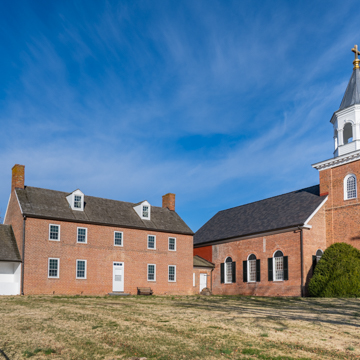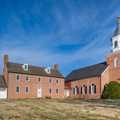This church, important to the history of Roman Catholicism in America, is located on the site of a Jesuit mission begun in 1704 as the Eastern Shore counterpart to the Western Shore’s St. Francis Xavier Church and Newtown Manor. It too encompassed a plantation to support mission activities while also including grist- and sawmills, a brick kiln, a wharf, and an academy that operated from 1745 to 1755, educating members of the prominent Carroll family. Extant are the brick church embellished by an entrance tower with belfry and steeple and the Georgian rectory. The name is derived from the Bohemia Manor tract on which it was established.
Bohemia Manor was part of a land grant from Lord Baltimore to Bohemian explorer, merchant, and cartographer Augustine Herrman in 1660, in payment for his mapping of the region. For a brief period, Herrman granted land for the establishment of a colony of Labadists, a communal Protestant religious organization. Herrman felt kinship with the Labadists, who like himself had immigrated from the Netherlands (some also via Dutch settlements in New York, as well as Pennsylvania). Bohemia Manor thus became a refuge for Dutch, German, Huguenot, and other northern European settlers.





